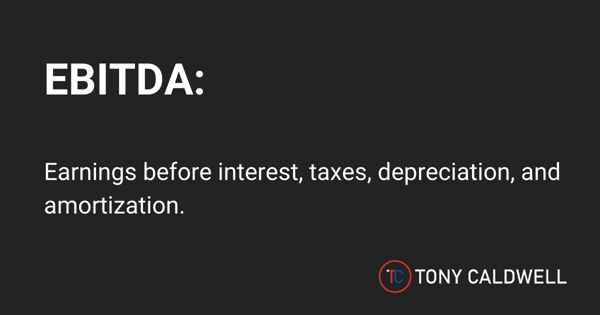I remember having a disagreement with my partner over staffing fairly early in my insurance agency management career. As co-business owners we had divided the management responsibilities for the agency, so that we shared them roughly equally. My partner was in charge of staffing the service function, which included the hiring and management of customer service representatives; and I was responsible for managing the accounting and fiscal part of our business.I noticed as we grew that our CSR’s always seemed to feel that they were overworked and needed more help. I was concerned that it was increasingly difficult for us to hit our profit targets.
Attending the certified insurance counselors class on agency management, I was introduced to the growth and performance standards survey published by the National Alliance for Insurance Education, and discovered the key performance indicators (KPIs) that they publish on agencies of all types and sizes. Using our financial statements to create benchmarks for our agency, I was able to see that we were in fact overstaffed in our service department.
Showing those insurance KPIs and metrics to both my partner and our service team, and making the point that our people were at least as good as everyone else in the insurance industry, I was able to negotiate our way to improved employee performance and - not so magically after all - our profits went up. This is the value of managing your insurance business using performance metrics.
"So, when we talk about the agency of the future being data-driven, the very first data that we need to collect and analyze is the data surrounding our financial performance."
While the discussion of data analytics, data science, and the use of data in managing businesses is a hot topic in virtually every industry today, as I've pointed out, it's not new: it's foundational. Almost all agencies already collect the raw data that they need to make better business decisions. It exists in your financial statements. There may be times when you need to tweak the way you collect data to make it more useful, and later, I will discuss some of those circumstances. But generally speaking, using KPIS to better understand your agency over a given period of time will be instrumental in growing your agency in the long term.
Collecting data
The first thing I would say to you about data is a word of encouragement. You've already got it! Let's take a minute and talk about the data that you really need to collect in order to manage the growth and the growth and profitability and value of your agency.
Financial information
The first thing, as I've already said, is strong financial information. More than likely, you have an excellent set of financial statements, including Profit and Loss, balance sheet, Production reports, and so on. That's all you really need to do excellent financial analysis for insurance agency growth.
Sales data
The next kind of data that every agency needs, and which should be easily available to you as a byproduct of the use of your agency management system, is production data. You will need data about insurance policies: the number of policies your sales team writes, and the number of policies per customer sold over a time period.
You can evaluate your sales process by looking at the number of policies per producer, the number of policies per customer service agent, for example.

You will also need good data on the premium you write. You'll want to know premium numbers by agency, producer, CSR, and by insurance carrier. You'll also want to know premium volume by line of business, and by line of business by carrier.
Evaluating producers
There are several insurance key performance indicators that every agency should consider tracking regarding producers. They include agency commission per producer, producer commission per producer, total premium by carrier/producer, and premium by producer/premium by line of business per producer.
You'll want to know these numbers as averages, but also for each unique producer in your organization, so that you can compare them against your agency's expectations as well as their colleagues, thus measuring the performance of your producers and having a baseline for sales growth goal setting. You'll want to know the total number of clients per producer, and the average number of policies per client by producer.
Loss information
The next area of data that every agency should have a good handle on is related to your loss experience. Of course, every carrier provides you loss data on their book of business with your agency. While each carrier provides the data in different ways, at a minimum, you will want to know your overall loss ratio, your loss ratio by line of business, and your loss ratio by producer.
You will also want to know what your current year loss ratio trend is, as well as the historical loss ratios for your agency with each carrier for at least the prior three years and preferably the prior five years.
New Business
Additional production data that you will want to track is related to new business. You will want to know the new business agency commission by producer, by year. You will want to know the new business by line of business for the agency each year - an important insurance KPI.
Retention data
"And finally, you will want to track data regarding your retention, as close to real-time as possible."
You will want to know your retention percentage by carrier, by line of business, by producer, by CSR. You will also want to track retention, based on commission for the same things as premium - this is a clear measure of customer satisfaction.
This is a lot of data, without question. The good news is almost all of it is available from your agency management system, and what isn't already available from your agency management system is available to you from your carrier’s production reports.
Basic KPIs for Insurance Agencies
We'll turn now to organizing the data so that it will be meaningful to you in the creation of key performance indicators.
EBITDA
The first KPI you will want to create is EBITDA, which stands for Earnings Before Interest, Taxes, Depreciation, and Amortization. Knowing this number, you will be able to track your bottom line performance against other agencies your size, writing the kind of business you write in located in your area of the country.
Being able to compare yourself against others is very important, as a means to know whether you're doing well in managing your business, or not. It puts your number in perspective, and EBITDA is a better number than profits because it recognizes, or takes into account, that agencies are all structured differently from the standpoint of the money they borrow and how they finance equipment, and it deals with whether or not they've purchased books of business or grown organically. It just eliminates all that confusion, down to one number.

So EBITDA is a key number to pay attention to in managing your business. It's also one of the most important insurance agency KPIs, since it helps you understand the value of your agency, as we'll discuss later.
Spread
The second key performance indicator that every agency should look at is called Spread.
Spread is the difference between your average revenue per person and your average compensation per person.
Simply put, it represents your gross profit per person, and as KPIs for insurance go this is an excellent measure of productivity, as well as profitability.
When you compare your spread to other agencies and find that it is less than average, this should provoke questions.
- First: Is my compensation higher than the market? Am I paying people too much?
- The second is: Do I have my staffing in balance for the amount of business I have?
When you find that your spread is significantly higher than your colleague organizations, it may indicate that you are understaffed and will have trouble growing in the future without more people. Or it could mean that you're doing a much better job than average and account rounding or account specialization. Knowing spread will allow you to know why your gross profitability is what it is. The concept of spread is not that esoteric and is fairly well known, and used correctly it can be instrumental to grow your insurance agency.
Rule of 20
The next KPI that agencies should consider using to analyze performance is not as well known. That's a statistic called the Rule of 20. The Rule of 20 measures an agency’s shareholder returns - in other words, how well the agency is performing for its owners.
You calculate the rule of 20 by adding 50% of your agency's EBITDA to your organic commission and fee growth rate; and you calculate organic commission and fee growth rate by dividing last year's commissions and fees by this year's commissions and fees after subtracting for any acquired commissions and fees.
If the answer is 20 or higher, it means that your agency is generating through profit distributions or share price appreciation, a shareholder return of approximately 15 to 17%, which would be typical under normal conditions. If your outcome is less than 20, then your total return to shareholders or owners is less than average.
If that is the case, it should prompt owners to take a look at expenses, to see if they are out of line, as well as look at organic new business production to see whether or not it is adequate.
Trust ratio
One critically important KPI is a function of your balance sheet rather than your income statement. It is the trust ratio. All insurance departments in every state require agencies to maintain a trust ratio of 1 or greater by law. This is true regardless of whether or not you're required to maintain a trust account.
The trust ratio is simply the ratio between the total amount of cash on hand and premiums due, and demonstrates that the agency is not using its customers’ money for its own operations. Generally speaking, agencies with adequate working capital have a trust ratio of 1.25 or greater.
Quick ratio
Another important KPI, which is important in managing cash flow from the balance sheet, is called the Quick Ratio. The quick ratio is simply the ratio between current assets and current liabilities, and measures the agency's ability to pay its bills on a timely basis. Again, a ratio of 1.25 or greater is desired.
Sales KPIs
In terms of sales KPIs, you should be calculating your retention ratios on a quarterly basis, based on policies and premium.
This is easy to do from an agency production statement and is simply the ratio of the number of policies you had at this time last year compared to the policies you have at this point in time on the same book of business. You can do the same thing with retention. The average agency in the United States has a retention ratio of 85%. Highly profitable agencies have ratios from 90 to 95%. Increasing retention is part of most effective agency growth strategies.
Policies per client
Another KPI that should be measured by producer, CSR, and agency is policies per client. These numbers give you an excellent idea about how good a job you're doing with account rounding. The average independent agency in the US has a “policies per customer” count of under two. Again, the most profitable agencies have policy counts of two and a half to three. It's a well-established fact that agencies with highly rounded books of business also have higher than average retention rates.
Sales Velocity
We've discussed the importance of determining new business growth by the agency and producer.
Another more sophisticated way to measure organic new business growth is with Sales Velocity.
Sales Velocity really tells you how good a job your agency is doing in writing new business. It's simply a ratio calculated by taking new commissions and fee income and dividing by the prior year’s commissions and fee income.
Some agencies with a number of producers will take the additional step of analyzing sales velocity among their producers by time in the business or by age. If you use the best practices study update published by Reagan Consulting in the Independent Insurance Agents Brokers of America, and compare your results against the sales velocity results of other agencies, you can gain insight into both your producer expectations, as well as their relative performance.
Book size per producer
The last KPI I'd recommend measuring is the size of the book of business per producer. When you look at agencies that have high growth and high profitability across size ranges, you see that they tend to have a higher average book of business size per producer, compared to agencies that are growing more slowly. That makes sense, of course, as you would expect that high-quality producers have higher performance. Measuring your producers’ average books of business against benchmarks is an excellent way to begin to understand the quality of your producer core.
Account stratification
From a management perspective, another KPI to consider carefully is your account stratification. The thing you're looking for here is the commissions you have per carrier for your top three carriers, as well as the other carriers in your book of business.
The question to ask is: Do you have too much of your business with one or more of your carriers? As we all know, insurance companies, products, and competitive positions change from time to time. The degree to which an agency is overexposed to one or more carriers is the degree to which that agency may be subject to volatility - both in its book of business, as well as its income and profits.
As a general rule, it's wise not to have more than 25% of your business with any given carrier, and no more than 50% of your business with your top three carriers.

Revenue per person
Turning to productivity there are three important key performance indicators that I would recommend tracking at least quarterly. The first is revenue per person on a rolling 12 basis.
Comparing your revenues per person to benchmarks will tell you whether or not you are properly staffed, whether you have headroom for growth, or whether you're getting ready to run into negative productivity trends because your people are overworked.
Revenue per person is also a good way of understanding why your profits are what they are.
Revenue per service person
Another productivity measure is revenue per service person. This drives directly at service staffing. Because service staffing typically runs 25% of an agency's cost picture, understanding whether you were properly staffed or not is critical to driving acceptable performance to your bottom line.
Commission rates
The final productivity measure I recommend considering is your average commission rates for both personal and commercial lines.
If you take a close look at either the best practices study or the growth of performances study, you'll see a definite trend for agents that are in the more profitable groups, and that trend is they tend not to pay producers more than 30 to 35% commission in commercial insurance and 25% in personal insurance.
Many agencies, particularly those under $1 million of revenue, pay producers more than that. You may have a valid business reason for doing so, but it's helpful to know how you compare to others and ask yourself from time to time whether the business reason that caused you to begin paying producers more than others is still valid.
If you're like most agency owners, you got where you are because you're an outstanding salesperson. Most salespeople aren't what any of us would call numbers people. So, the idea of studying data seems not only boring but painful. It doesn't have to be.
I recommend that you set up these dozen KPIs in a spreadsheet and ask your accounting team to prepare them for you on a quarterly basis.
I also recommend that you have them put the same numbers for the average agency of your size and location from the best practices study, or the growth and performance study in columns next to the year’s data, and highlight for you where you are either under or over-performing averages.
You should be able to tell at a glance from that presentation how well your agency is doing, how well prepared you are for the future, and what changes you should consider making to improve your performance. This makes the use of the data, easy, simple, and powerful.
Before you start thinking about a marketing strategy, content marketing, social media and other ways to grow your sales, you should have analyzed your KPIs and put your house in order. Remember that a penny saved in expenses is worth about 5 in sales. Now go crunch some numbers and make your agency grow!
Recent Posts
Overcoming Insurance Industry Challenges
Those of us who own insurance agencies are no strangers to industry challenges. The COVID-19 pandemic brought several of the latest issues racing to the forefront as individuals ...
The Future of Digital Trends in the Insurance Industry
The times, as they say, they are a’changing! And they’re changing even faster and more drastically than most people in the insurance sector have seen. While digital transformation ...
How to Scale an Insurance Agency: Best Practices Guide
Growth is an important concept in any industry. Many independent insurance agency owners want to scale because they want to grow their book of business.


